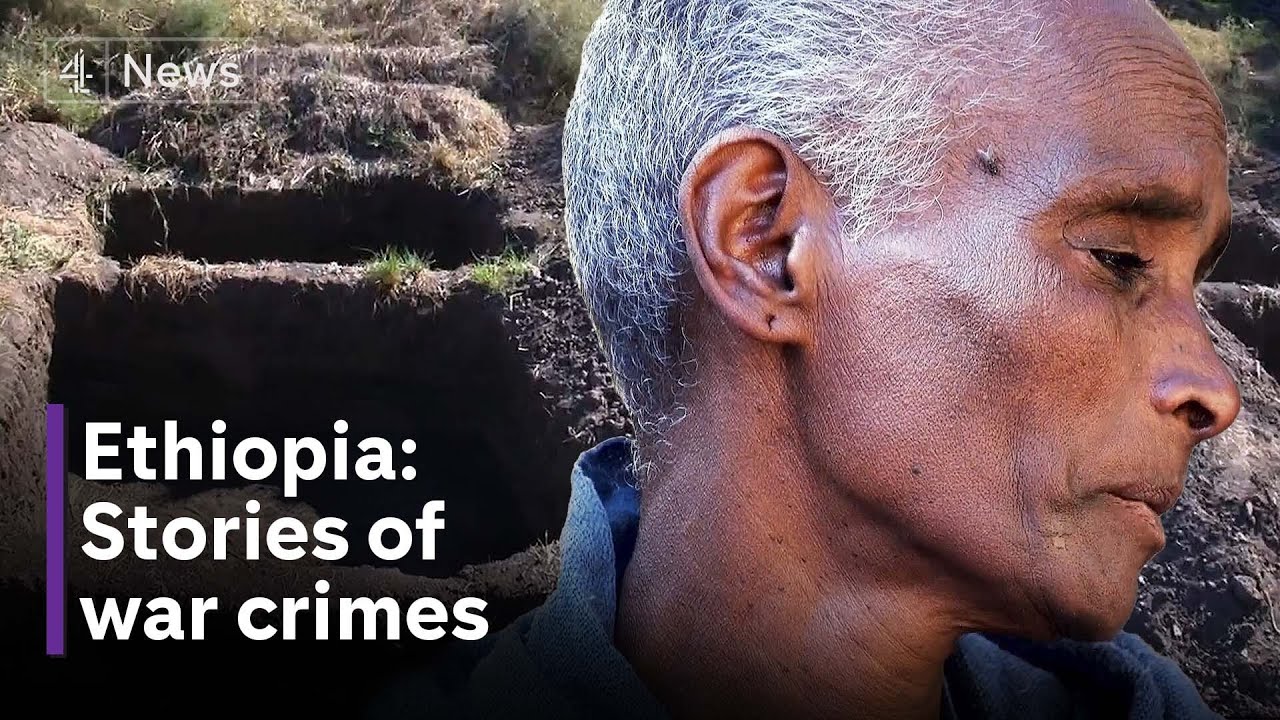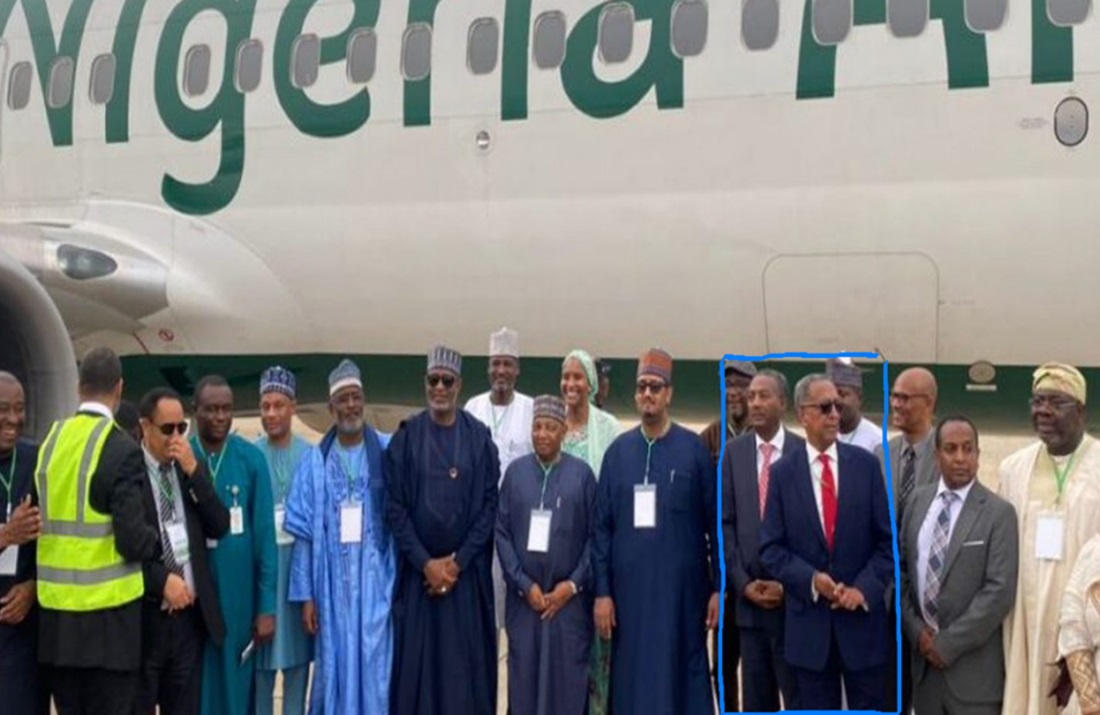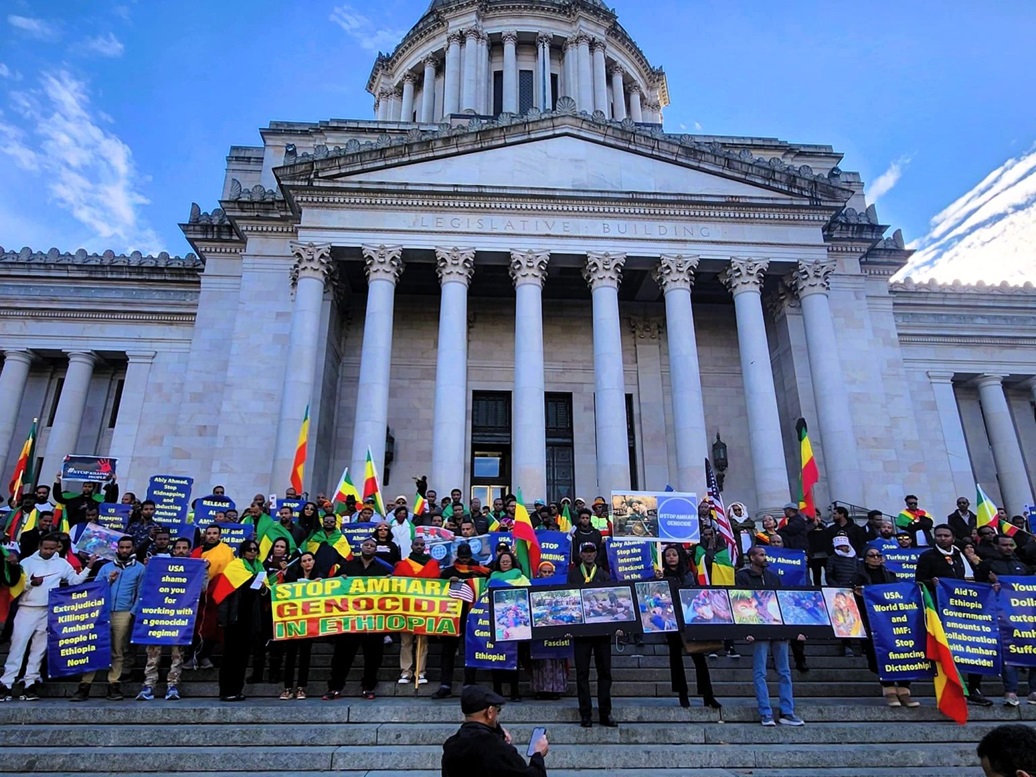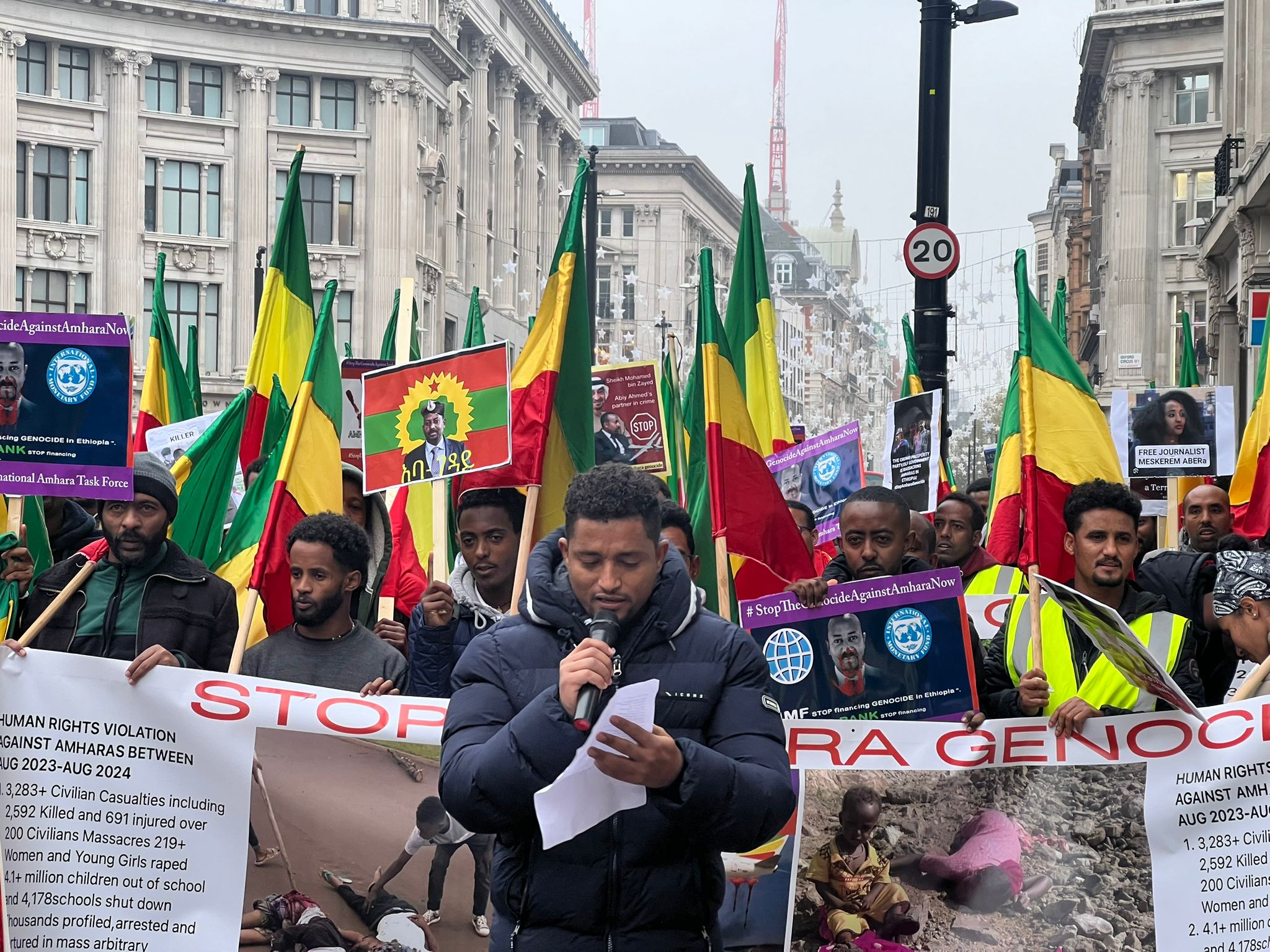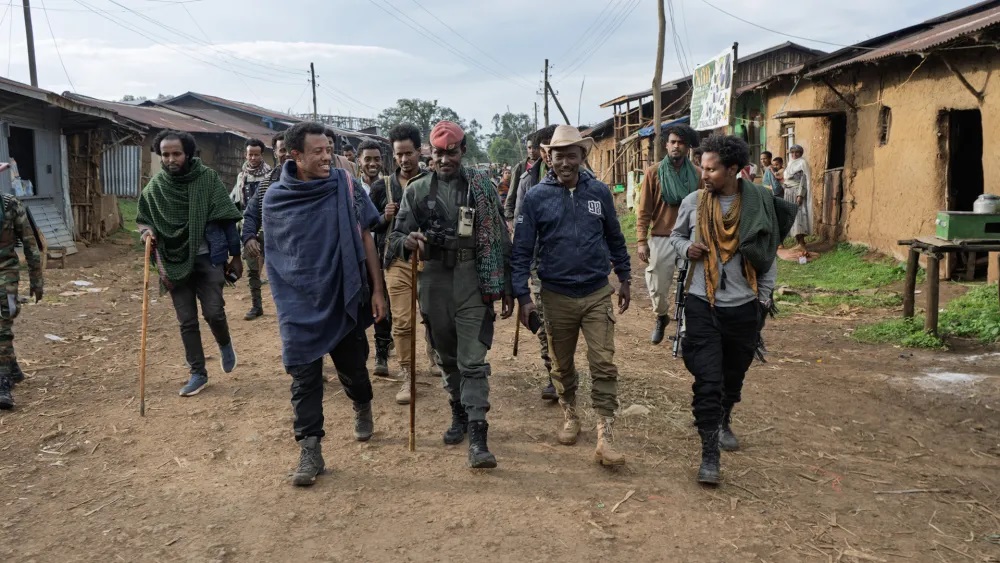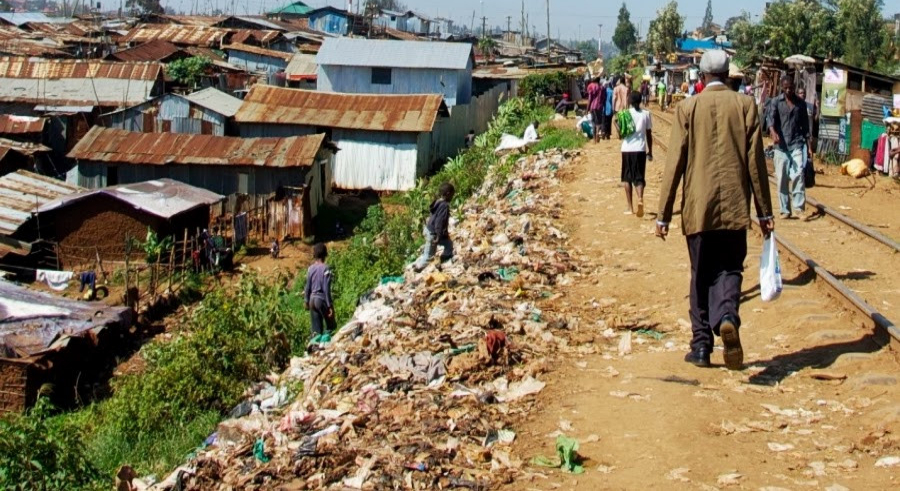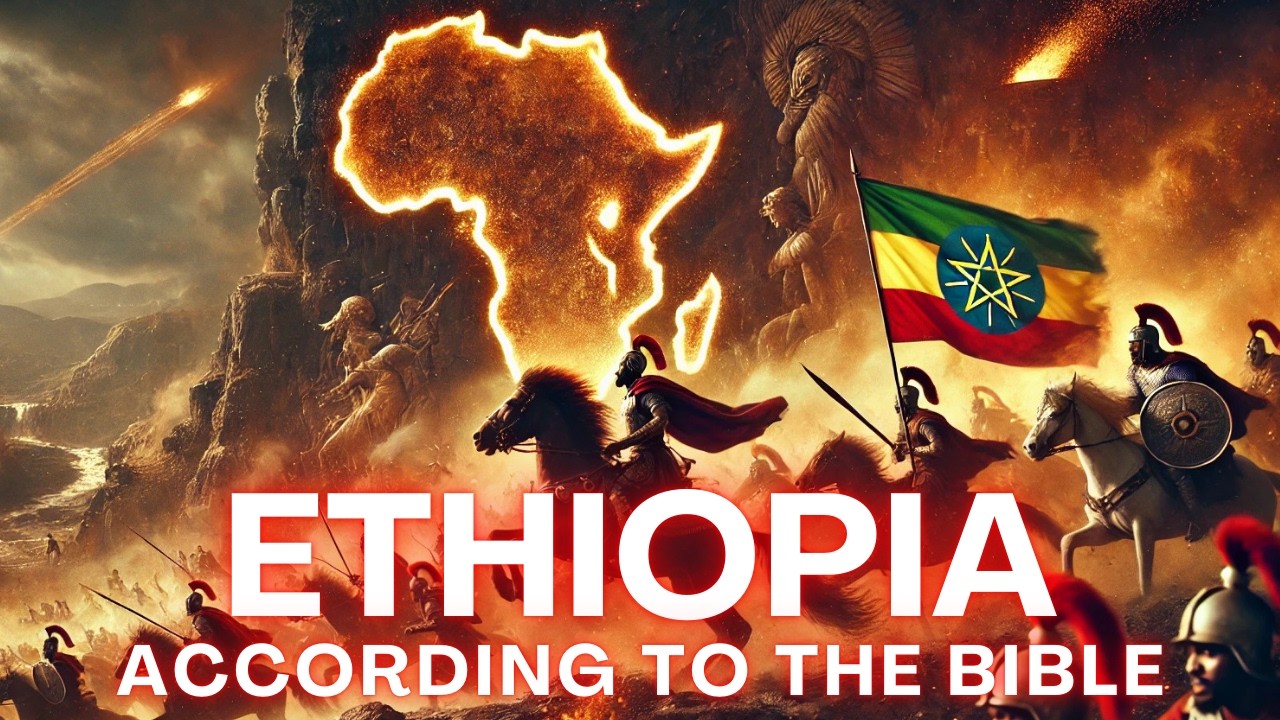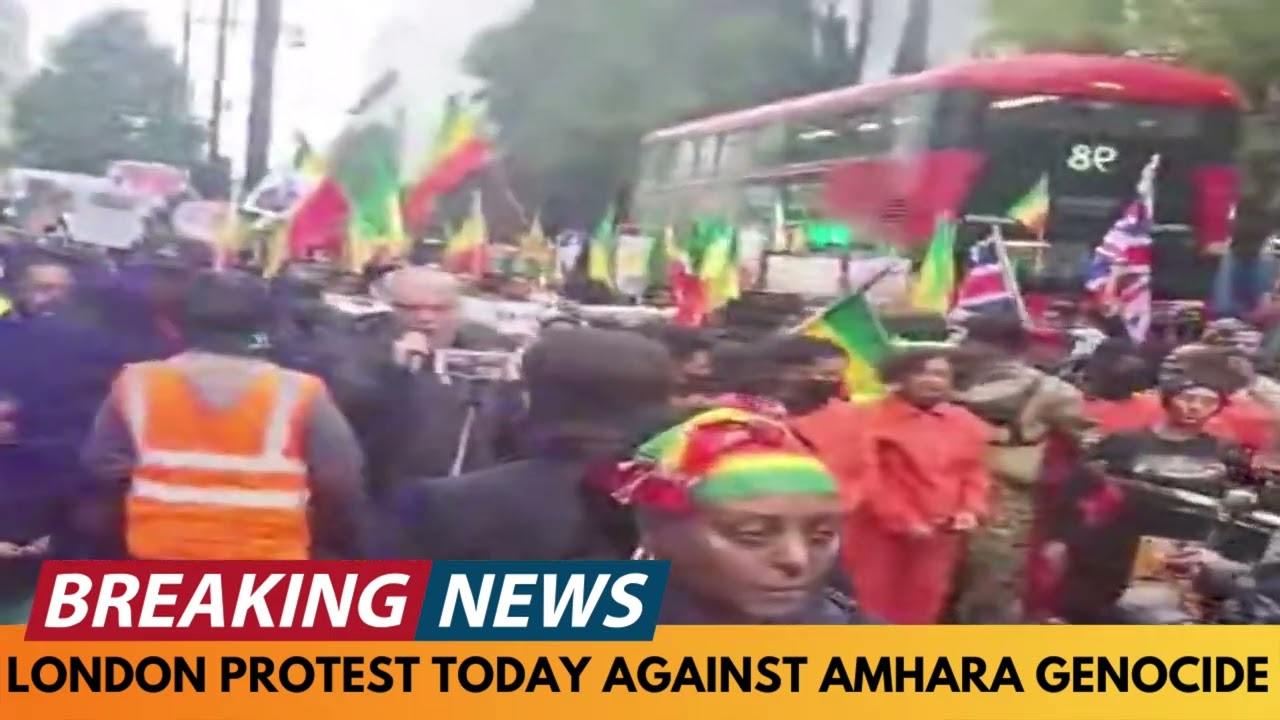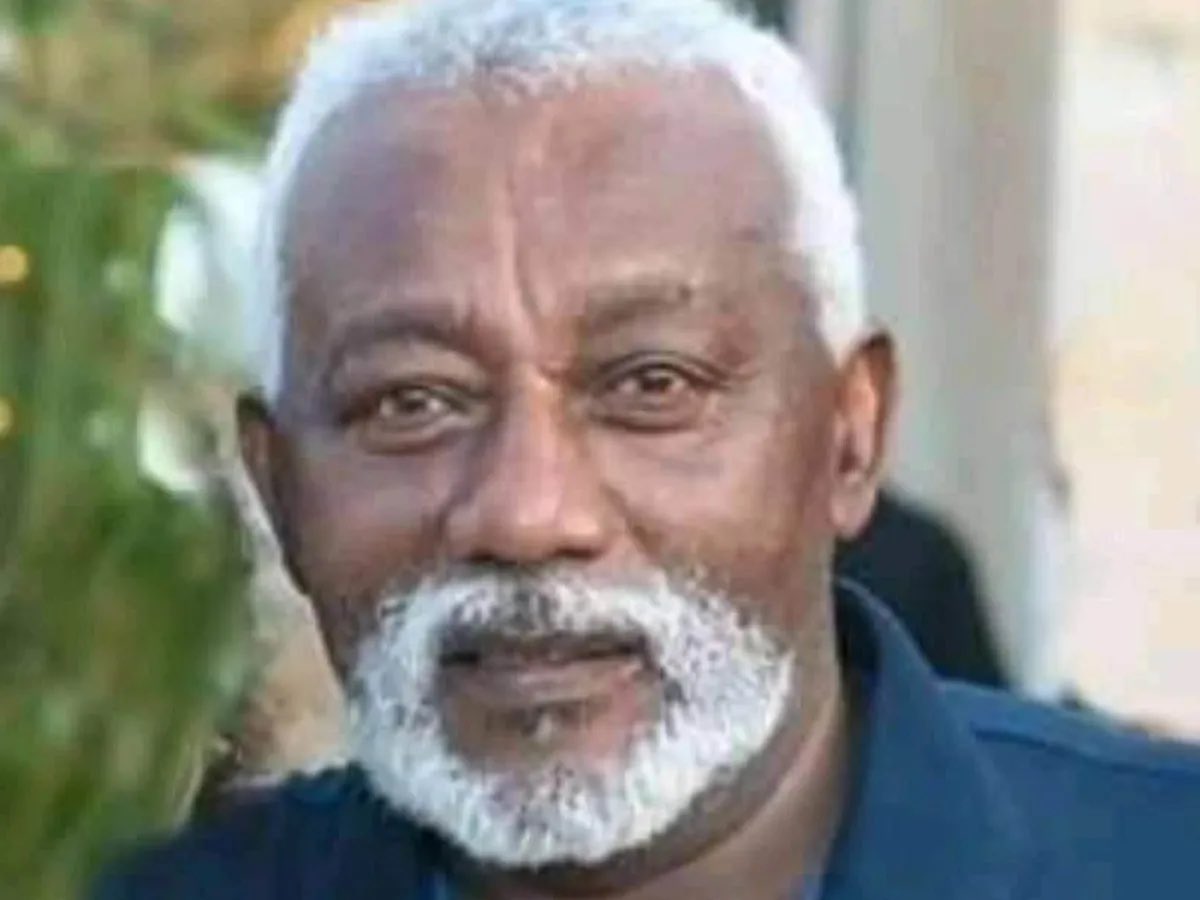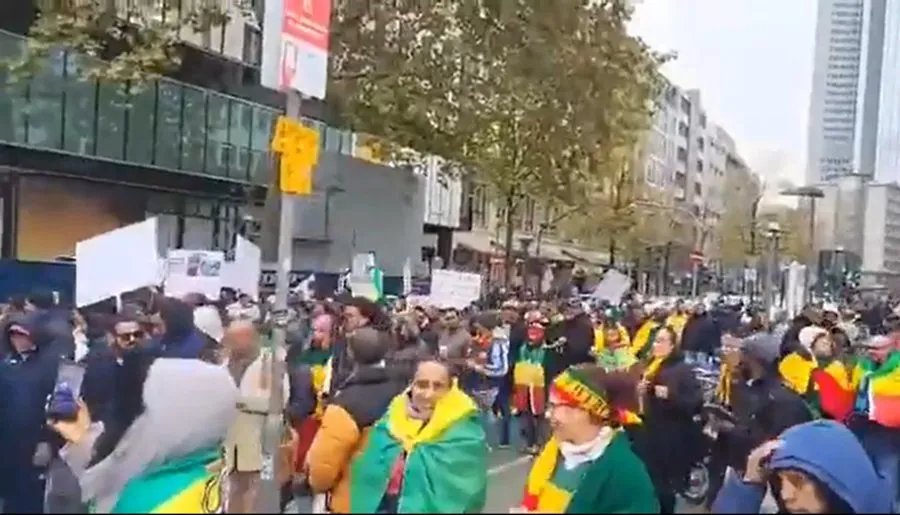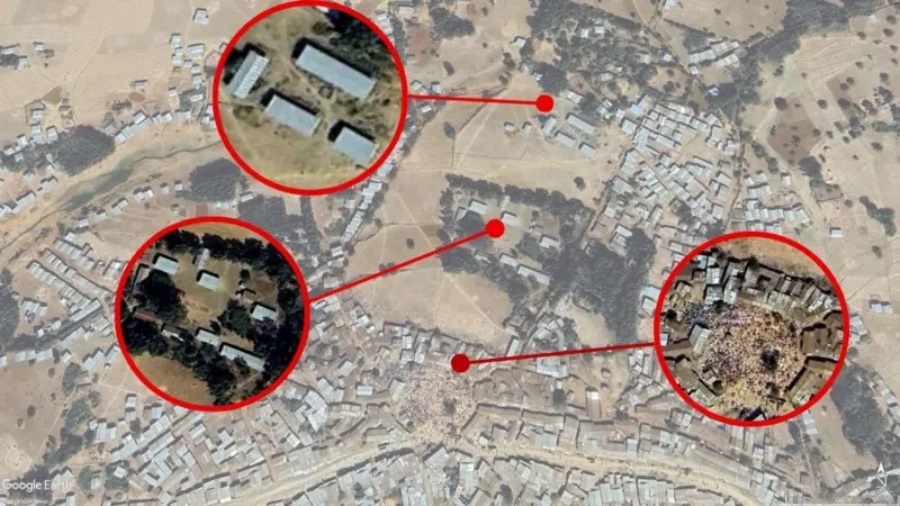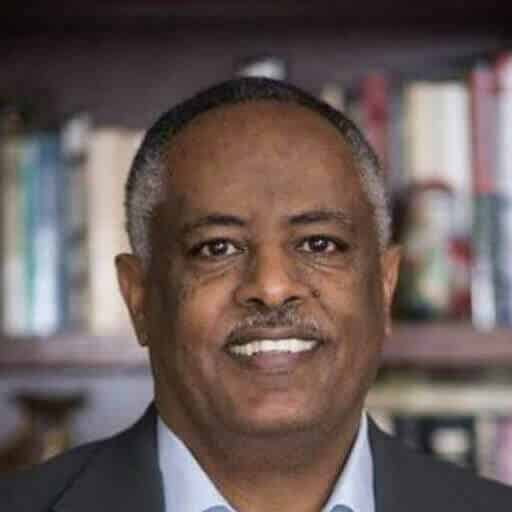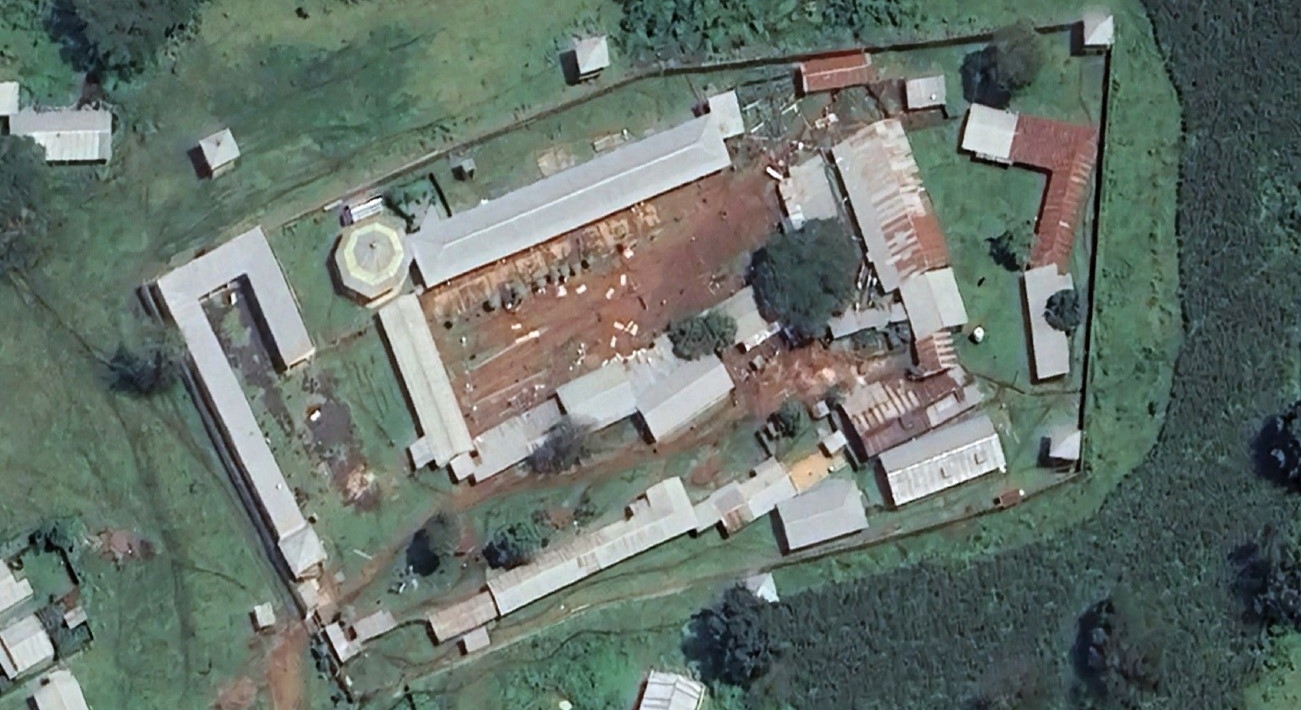BY BILEH JELAN @BILEHJELAN
Addis Abeba March 22, 2021 – Reports of an ongoing conflict between Amhara residents backed by Amhara Special Forces (Liyu Hail), a claim by Oromo witnesses and Oromo residents of both Oromia Special Zone and North Shewa Zone in Amhara Regional State flooded social media over the weekend. The number of victims and injured are yet to be specified but graphic pictures allegedly from the clashes have been circulating social media. The conflict was first reported on Friday March 19, 2021 night and according to sources on the ground that spoke to Addis Standard, is still ongoing. The violence saw the burning down of religious institution as reports have been suggesting, something Addis Standard was able to confirm through North Shewa Zone Peace and Security bureau head, Abera Mekonnen who said, “A mosque and a church have been burned down in Ataye as a result of the violence, I can’t give more details as investigations on the matter are ongoing.”
“A MOSQUE AND A CHURCH HAVE BEEN BURNED DOWN IN ATAYE AS A RESULT OF THE VIOLENCE, I CAN’T GIVE MORE DETAILS AS INVESTIGATIONS ON THE MATTER ARE ONGOING.”
ABERA MEKONNEN , NORTH SHEWA ZONE PEACE AND SECURITY BUREAU HEAD
On March 21, the Amhara Regional State issued a statement through the facebook page of its communication bureau where it acknowledged the occurrence of violence without specifying the number of dead and injured and blamed the violence on the Oromo Liberation Army (often referred by the government as OLF/Shene) and ‘remnants of TPLF. The statement read, “The regional government will launch an investigation into the violence, get information on the human cost and property damage and make the information available to the public.” The statement also offered condolences and promised to bring perpetrators to justice, “We would like to inform the regional government that it is deeply saddened by the loss of life and property caused by the clashes in Jile Tumuga and North Shewa Zone of the regional state and will bring to justice the perpetrators of this heinous crime and all their accomplices. Our people must stand by the government in order to prevent attacks by the TPLF and the rest of the TPLF in the area where these attacks took place and in other parts of the region.”
Sisay Damte, the head of peace and security bureau of the regional state corroborated the statement by Amhara Regional State and explained that the violence broke out after the shooting of one individual. He didn’t specify the nature of the attacks but went on saying that the attack is carried out by unspecified armed groups. He said that additional militia, special forces and the federal police were deployed to the area as of Saturday, March 20, 2021. The peace and security bureau urged the community to stay patient and vigilant and promised to issue an update as to who is behind the conflict and the amount of damage.
However, Hassan Hadiya, a resident of Kemise who spoke to Addis Standard tells a different story. According to Hassan, the violence started after Amhara Special police shot an individual in front of the grand mosque in Ataye after night prayers (Isha). He said, “The conflict started four days ago, it started Friday night and it is still ongoing especially in Kemise town. It started in Ataye as a result of Amhara Special Forces shooting an individual at the doorsteps of the grand mosque there.” When he was asked about the numbers of casualties and injuries, he said, “The conflict is still ongoing and there are a lot of reported casualties, I can’t give you an exact number but it is high. There is severe damage to properties, a whole compound of houses were burned down, there is damage to farms and vehicles.” He explained that clashes between Oromo residents and Amhara Special Forces are not new and have been a recurring sight for the last two years. He added, “Oromos have always suffered in this region. They attack us merely because we are Oromo.” He concludes, “We heard there are similar attacks in North Shewa, what I heard is two injured, were taken out of the ambulance and shot at close range, I have no way of confirming that but that is what is reaching us here in Kemise.”
“….WHEN THE VIOLENT MOB BACKED BY LIYU HAIL REACHED KEMISE THE COMMUNITY PUSHED BACK AGAINST THIS AGGRESSION AND CORNERED THE AGGRESSORS INTO A CAMP THAT BELONG TO AMHARA LIYU HAIL IN AN AREA CALLED ‘GALMA ABBA GADA’ WAITING FOR THE ARRIVAL OF FEDERAL FORCES AND NOW THE FEDERAL FORCES ARE SURROUNDING THE CAMP, PREVENTING LIYU HAIL FROM ATTACKING THE COMMUNITY.”
ALI USMAN
Ahmed, who wanted to go by his first name for security reasons, said, “The situation is spiraling out of control. The Amhara Liyu Police are attacking civilians and going on a burning campaign especially in Kemise. People are leaving the city for the rural areas and it is only worsening not getting better.” Ahmed explained to Addis Standard that when Federal forces arrived the Amhara Liyu police engaged them. When asked about the immediate reaction by the Oromo community residing in Kemise Ahmed said, “We had no choice but to defend ourselves against this transgression, but let’s make something clear when I say defend ourselves, the community is lightly armed and their mechanisms of defense are closure of roads and community watch.” He continued, “I know what the other side is saying but it is a government force attacking unarmed civilians and no matter how they try to hide this truth behind any propaganda, the fact remains that Amhara Liyu Police shot the deputy imam of Ataye grand mosque and that ignited what you see now.” Ali Usman, a Kemisie resident told Addis Standard, “We were defending ourselves, the situation is very serious for us here. We had to defend ourselves against a regional government that wanted to harm us.” He explains, “There were these sentiments that suggested that they wanted to do in Wollo what they did in Raya and other places. It was premeditated, they killed that imam in Ataye and they harmed the elders.” He continues, “It is the Amhara community youth backed by the Liyu Hail. When the violent mob backed by Liyu Hail reached Kemise the community pushed back against this aggression and cornered the aggressors into a camp that belong to Amhara Liyu Hail in an area called ‘Galma Abba Gada’ waiting for the arrival of Federal forces and now the federal forces are surrounding the camp, preventing Liyu Hail from attacking the community.”
“THE FEDERAL POLICE COMMISSION IS A NEUTRAL POLICE FORCE, IT IS HELPING BOTH SOCIETIES IMPARTIALLY TO DECREASE TENSIONS AND IT IS DOING SO TO SOLVE THE CONFLICT PEACEFULLY AND TO REDUCE THE LOSS OF LIVES AND PROPERTY.”
JEYLAN ABDI, FEDERAL POLICE COMMISSION SPOKESPERSON
Ahmed and Ali’s accounts of Federal intervention are corroborated by comments from the Federal Police Commission spokesperson, Jeylan Abdi who told Addis Standard, “The claims that the Federal Police is engaged in clashes with Amhara Special Forces is not true.” He added, “The federal police commission is a neutral police force, it is helping both societies impartially to decrease tensions and It is doing so to solve the conflict peacefully and to reduce the loss of lives and property.”
On his part, Ahmed Hassan, Oromia Special Zone administrator spoke to Oromia Broadcasting Network (OBN) and corroborated Hassan’s story about the reason behind the start of the conflict, he said, “An oromo was killed when he was leaving the mosque in Ataye and his death ignited the violence.” He did not mention who was behind the attack on the individual but he added, “We tried to solve the matter by speaking to elders in the community to advise calm and patience but that did not succeed and the conflict escalated.” He explained that there are ongoing efforts by the federal police to restore calm.
Recent clashes come in the backdrop of similar incidents and show patterns of a long standing conflict that claimed lives and properties and like previous episodes of violence contradicting narratives were presented. Last time local authorities in Ataye blamed armed militiamen “affiliated with Oromo Liberation front (OLF)” for the violence, authorities in Kemise blame the regional state’s special forces as the initial cause of the violence, this time around witness testimonies blame the regional special forces while the regional government accuse both OLF-Shene and TPLF of being behind the violence.
The attacks come also in continuation of sporadic ethnically and religiously motivated episodes of violence that wreak havoc across Amhara Regional State since November 2019, they also come as the border conflicts between Ethiopia and Sudan intensifies, as the Ethiopian government accuses Sudan of demolishing Ethiopian administrative institutions, overtaking military camps, killing and displacing residents, and destroying their crops and properties.
Addis Standard contacted Amhara Communication Bureau for comments on the involvement of Amhara Special Forces and in turn the bureau referred Addis Standard to its facebook page. AS

